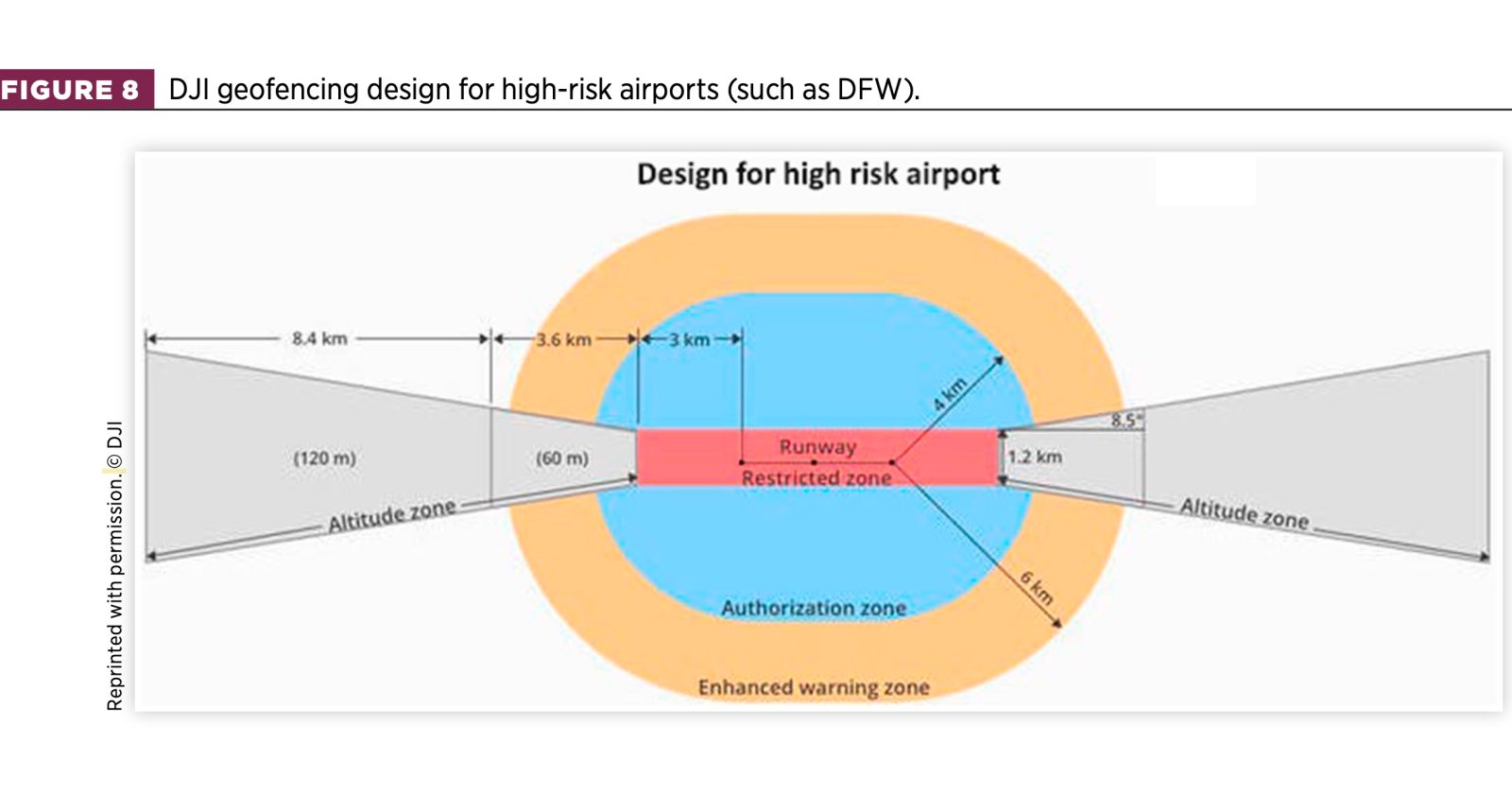
Few incidents are better generators of headlines, public shivers, and the ire of UAV sector experts than reports of “near misses” between drones and piloted aircraft – encounters whose very definitions and delineations are often left to the subjective dread of the beholder. A recently released study, however, uses objective methods for analyzing such mid-air events, and offers suggestions for further reducing their relatively limited numbers.
The report is the work of researchers at Embry-Riddle Aeronautical University and Unmanned Robotic Systems Analysis, who observed piloted aircraft and drone traffic around Dallas-Fort Worth Airport’s Terminal C between 2018 and 2021. Both its methodology and observations may calm the hackles raised among UAV sector professionals and observers by recurring general media reports of fearfully worded near-midair collisions (NMACS) between smaller craft and passenger planes. For starters, the study was based on the assumption that most of those sightings are made in micro-seconds by surprised cockpit crews, and involve other factors that skew their precision from the outset.
“Sighting reports are of limited value as they are highly subjective and dependent on the pilot to accurately estimate range and altitude information,” notes the report, which was peer reviewed before publication by the Society of Automotive Engineers in the SAE International Journal of Aerospace. “Moreover, they do not account for NMACs that an aircrew member does not spot.”
Read: UK passenger jet reports another near-miss with suspected drone
As an analytical alternative to those split-second, heart-stopping glimpses as basis of near miss reporting and overall threat potential, the study drew up an objective, data-based process for identifying and measuring UAV flights in proximity of piloted aircraft.
Over the roughly three-year period, researchers used different tech to calculate drone telemetry, altitude, launch location, and other salient flight details to analyze craft involved in NMAC situations – defined as encounters of within 500 feet.
The findings pulled from a 36-month period found 24 incidents qualifying as near-miss collisions at Dallas-Fort Worth, whose mean lateral distance between craft was around 215 feet. Commercial airlines were involved in 11 of those; seven with helicopters; and six with what were called general aviation aircraft.
Those are far from ideal numbers, but less horrifying than the impressions of frequent – and increasing – NMAC rates that usually come across in general media reports of drone sightings. Indeed, because the report relied on objective data rather than glances from the cockpit, its clinical contextualization of incidents was less conducive to additional dramatization of click-seeking platforms.
For example, 13 of the 24 near misses registered – i.e., over 50% of the total – featured the same trio of recidivist drones flying around crewed aircraft, a recurrence suggestive of willfully illegal or just stupid operator behavior that may be eradicated with better enforcement. In the same vein, in fully 96% of all cases, UAVs were determined to have been violating altitude limitations in areas involved.
Read: Canada issues report on 2021 police drone’s collision with a plane descending to land
Indeed, researchers concluded that “breaches of operator compliance with (drone) operational altitude limits… (and) with the LAANC UASFM airspace authorization restrictions,” were causal factors in the the vast majority of near-miss scenarios.
For that reason, they recommend the Federal Aviation Administration (FAA) broaden legally designated restrictions around airport approach and departure corridors, and drone manufacturers similarly build wider geofencing flight blocking parameters into their navigation tech for use when their UAVs near critical air traffic zones.
“During this study, 10 NMAC events involving air carrier aircraft occurred within 1.5 NM of a runway approach or departure corridor,” the report says. “Given these conditions, the research team suggests the FAA consider proposing regulatory guidance to extend runway exclusion zone protections from 1 SM from the runway end to 3.0 NM (~3.45 SM) from the runway end… (It) further recommends that (drone makers) consider extending the geofencing warning zone radius around heliports from 500 meters to 1.5 NM, which may provide sUAS operators further with situational awareness about nearby rotorcraft hazards.”
FTC: We use income earning auto affiliate links. More.




Comments